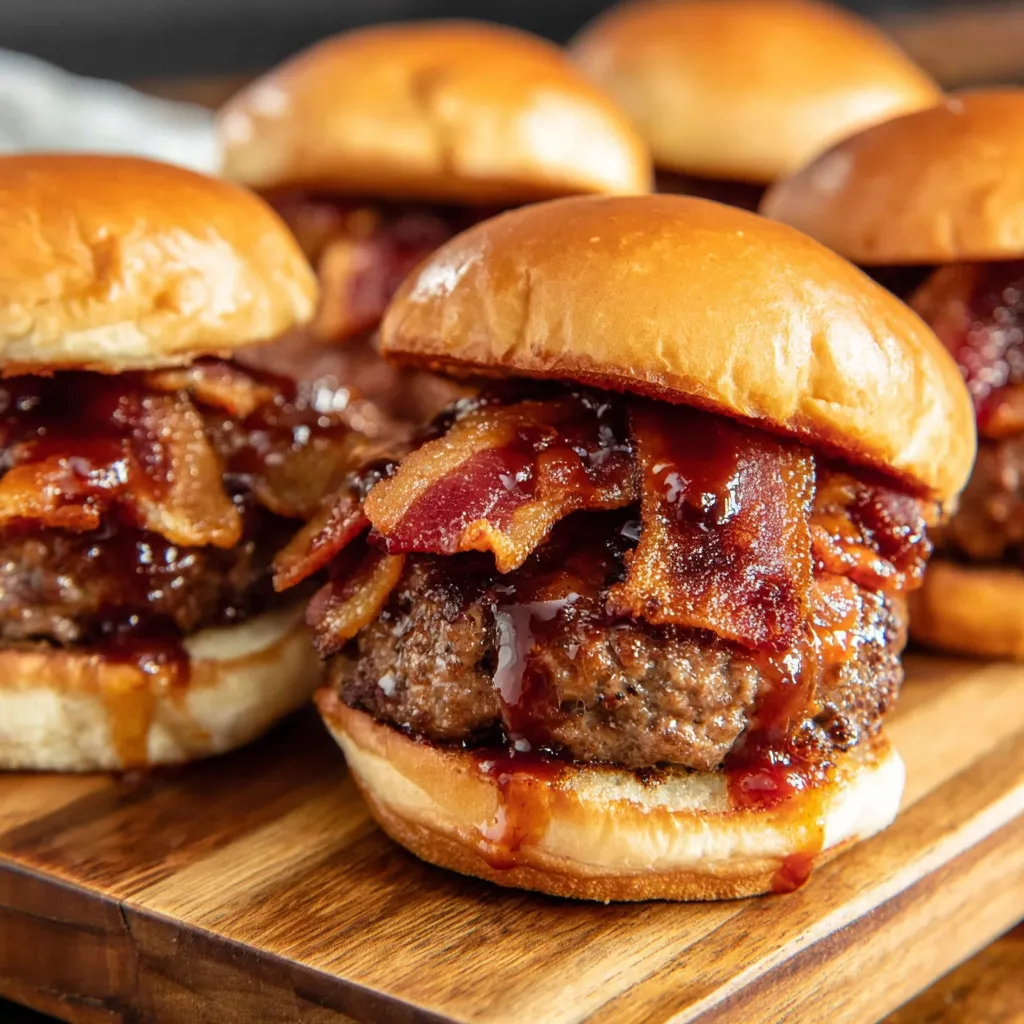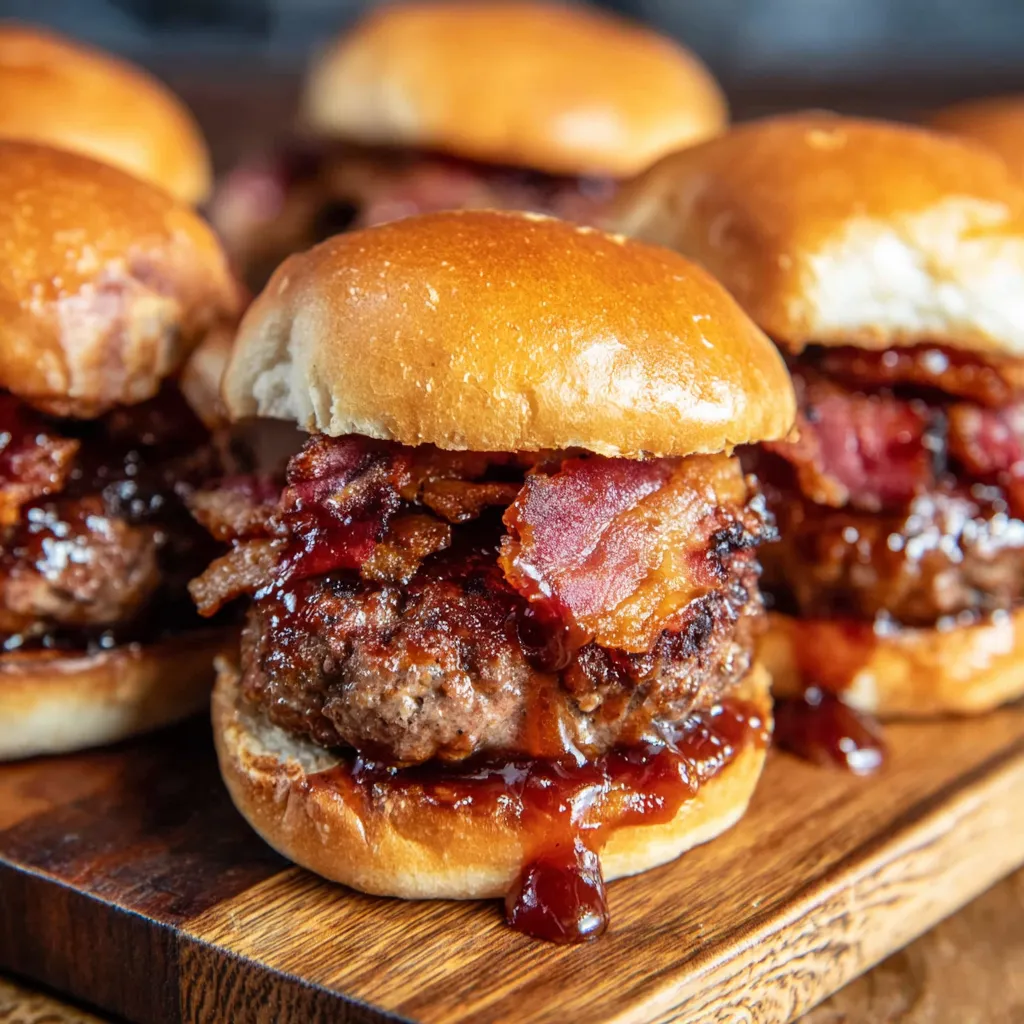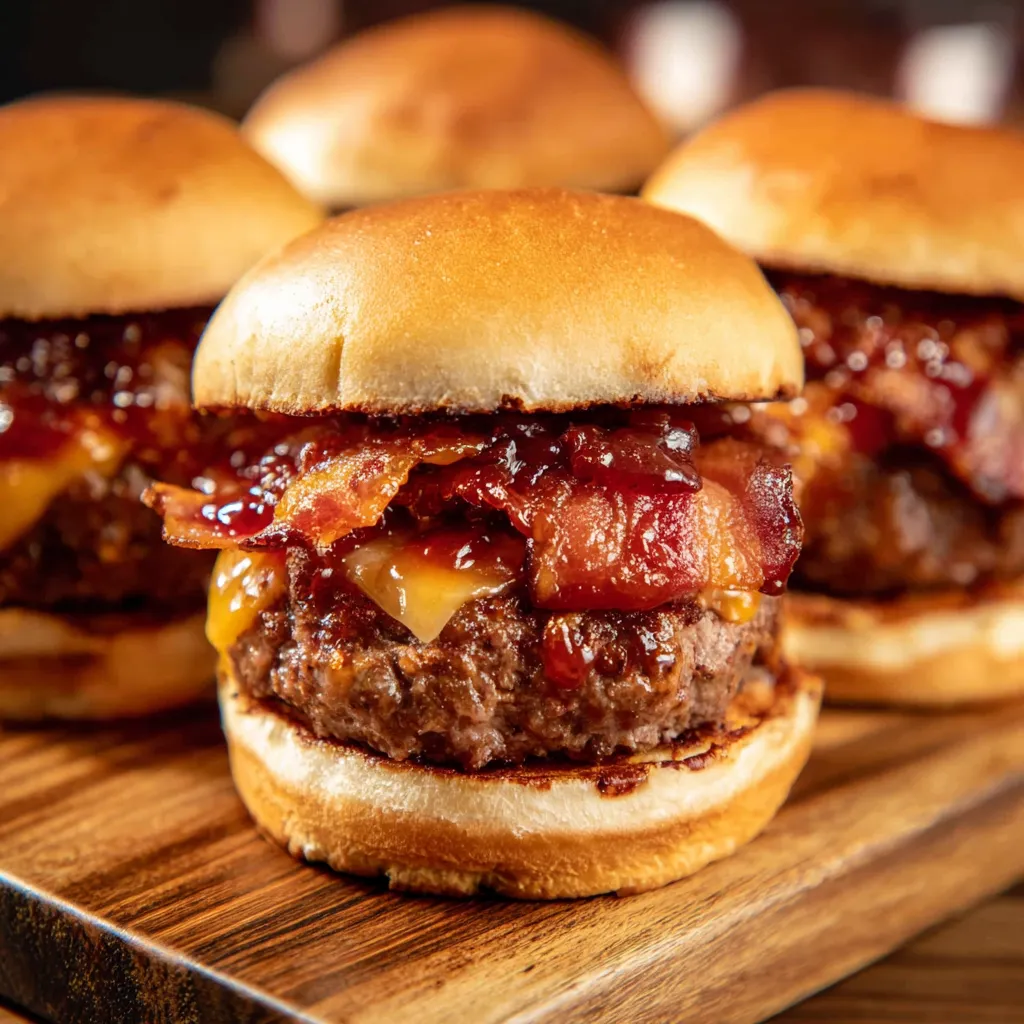 Save
Save
These elk bacon burgers have become my go-to recipe when I want to impress guests with something truly special. The combination of lean elk meat with crispy bacon creates an incredibly rich and satisfying burger that's unlike anything you'll find at a restaurant. I discovered elk meat through a hunting friend, and after one bite of these burgers, I knew I had to perfect the recipe.
The first time I made these, I was nervous about cooking with elk meat, but the bacon acts as a natural fat source that keeps everything moist and flavorful. My family now requests these burgers for every summer barbecue, and I've learned that the key is not to overthink the seasoning since elk has such a wonderful natural flavor.
Ingredients
- 1 lb ground elk meat: provides lean protein with a rich, slightly gamey flavor that's milder than venison
- 1 lb hickory smoked bacon: adds essential fat and smoky depth; choose thick cut for best texture
- 1 tbsp Worcestershire sauce: brings umami and helps bind the mixture while adding subtle tang
- 1 tbsp breadcrumbs: acts as a binder to hold the patties together without making them dense
- 1 tsp salt: enhances all the natural flavors; use kosher salt for even distribution
- ½ tsp ground black pepper: adds gentle heat and complements the elk beautifully
- ½ tsp onion powder: provides savory depth without overpowering the meat
- ½ tsp dried parsley: adds a fresh note and visual appeal
- ¼ tsp paprika: contributes mild sweetness and beautiful color
- Olive oil for cooking: creates a perfect sear and prevents sticking
Step by Step Instructions
- Prepare the Bacon
- Cook the bacon in a large skillet over medium heat until it reaches perfect crispiness, about 8 to 10 minutes. You want it golden brown and crispy but not burnt. Remove from heat and let it cool completely on paper towels. Once cooled, chop 4 to 5 slices into small pieces about the size of rice grains. The remaining bacon can be saved for serving alongside the burgers.
- Mix the Burger Base
- Place the ground elk meat in a large mixing bowl and add the cooled bacon pieces. The bacon should be completely cool to prevent the elk fat from melting. Add the Worcestershire sauce, breadcrumbs, salt, pepper, onion powder, dried parsley, and paprika. Using clean hands, gently mix all ingredients together just until combined. Overmixing will result in tough burgers, so stop as soon as everything is evenly distributed.
- Form the Patties
- Divide the mixture into four equal portions and gently shape each into a patty slightly larger than your burger buns. Make a small indentation in the center of each patty with your thumb to prevent the burgers from puffing up during cooking. The patties should be about ¾ inch thick. Unlike beef burgers, these won't shrink much during cooking due to the lean nature of elk meat.
- Sear to Perfection
- Heat a skillet over medium heat and lightly brush each patty with olive oil on both sides. Place the patties in the hot skillet and cook for 4 to 5 minutes without moving them to develop a beautiful golden crust. Flip once and continue cooking for another 3 to 4 minutes for medium doneness. Elk is best served medium to medium well since it can become tough if overcooked.
 Save
Save
I've learned that elk meat cooks faster than beef, so keep a close eye on your burgers to avoid overcooking. The bacon not only adds incredible flavor but also provides the fat content that elk naturally lacks. My favorite part about this recipe is how the hickory smoke from the bacon complements the natural earthiness of the elk meat perfectly.
Storage and Meal Prep
Store leftover cooked patties in the refrigerator for up to 3 days in an airtight container. For best results, reheat gently in a skillet over low heat rather than the microwave to maintain the texture. Raw patties can be formed ahead of time and refrigerated for up to 24 hours before cooking. If freezing raw patties, place parchment paper between each one and wrap tightly in plastic wrap followed by aluminum foil.
Ingredient Substitutions
While elk is the star of this recipe, you can substitute with ground venison or even a lean ground beef if elk isn't available in your area. If you can't find hickory smoked bacon, any thick cut bacon will work, though you might want to add a drop of liquid smoke to the mixture. For a gluten free version, replace the breadcrumbs with almond flour or crushed pork rinds. The Worcestershire sauce can be substituted with soy sauce or coconut aminos for different dietary needs.
Serving Suggestions
These robust burgers pair beautifully with classic toppings like sharp cheddar cheese, caramelized onions, and fresh tomatoes. I love serving them on toasted brioche buns with a spread of garlic aioli and crisp lettuce. The rich flavor also works wonderfully with more adventurous toppings like sautéed mushrooms, blue cheese, or even a fried egg. Consider serving with sweet potato fries or a simple arugula salad to balance the richness.
 Save
Save
The Story Behind Elk Meat
Elk meat has been a staple protein for Native American tribes for thousands of years and is experiencing a renaissance in modern American cuisine. It's sustainably raised, often grass fed, and provides a cleaner taste than conventional beef. The meat is naturally free from hormones and antibiotics, making it an excellent choice for health conscious families. When I first tried elk, I was surprised by how mild and clean it tasted compared to other game meats.
Recipe FAQs
- → Can I substitute elk with another meat?
Yes, you can use lean beef, bison, or venison as alternatives if elk is unavailable.
- → Why add bacon to the elk mixture?
Bacon adds moisture, smokiness, and fat content, which enhances the flavor and keeps the patties juicy.
- → How do I keep the patties from falling apart?
Mix gently and use breadcrumbs as a binder. Avoid overworking the mixture to maintain structure.
- → Should I grill or pan-sear these burgers?
Either works well. A hot skillet offers a great sear, while grilling adds extra smoky depth.
- → Do these burgers need resting time after cooking?
Yes, let the patties rest for a couple of minutes after cooking to retain their juices before serving.
